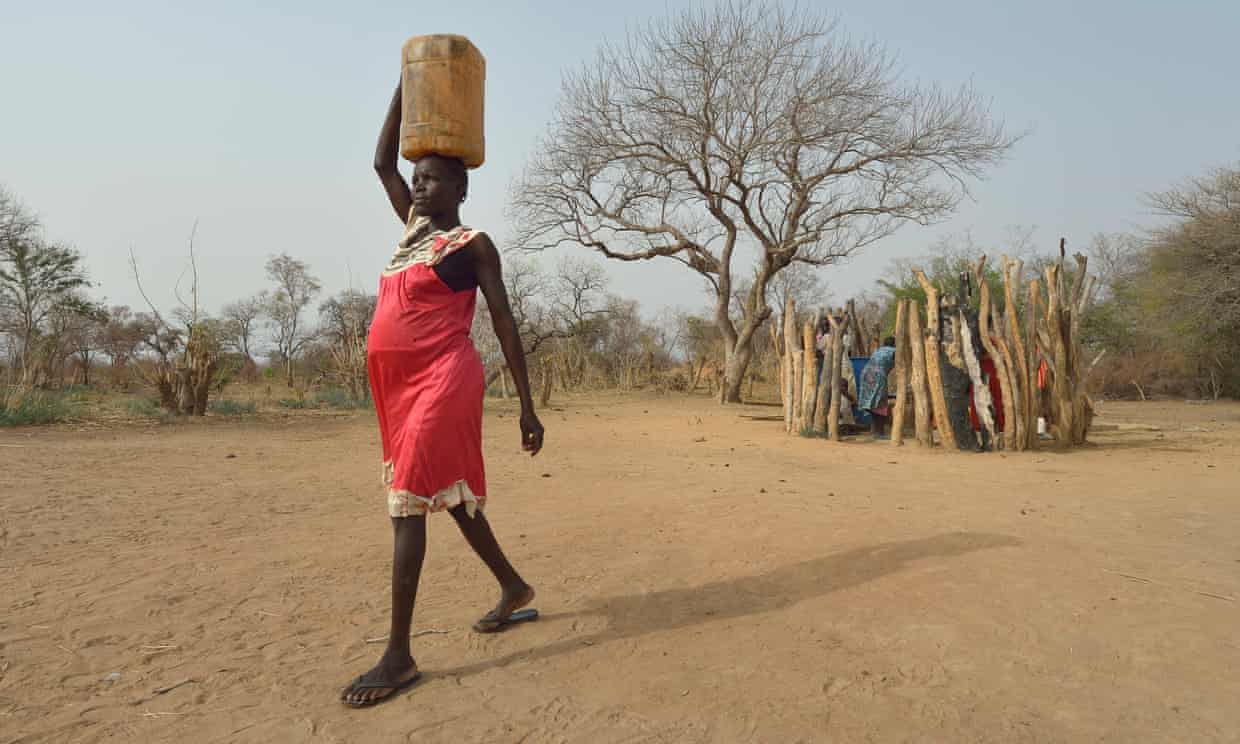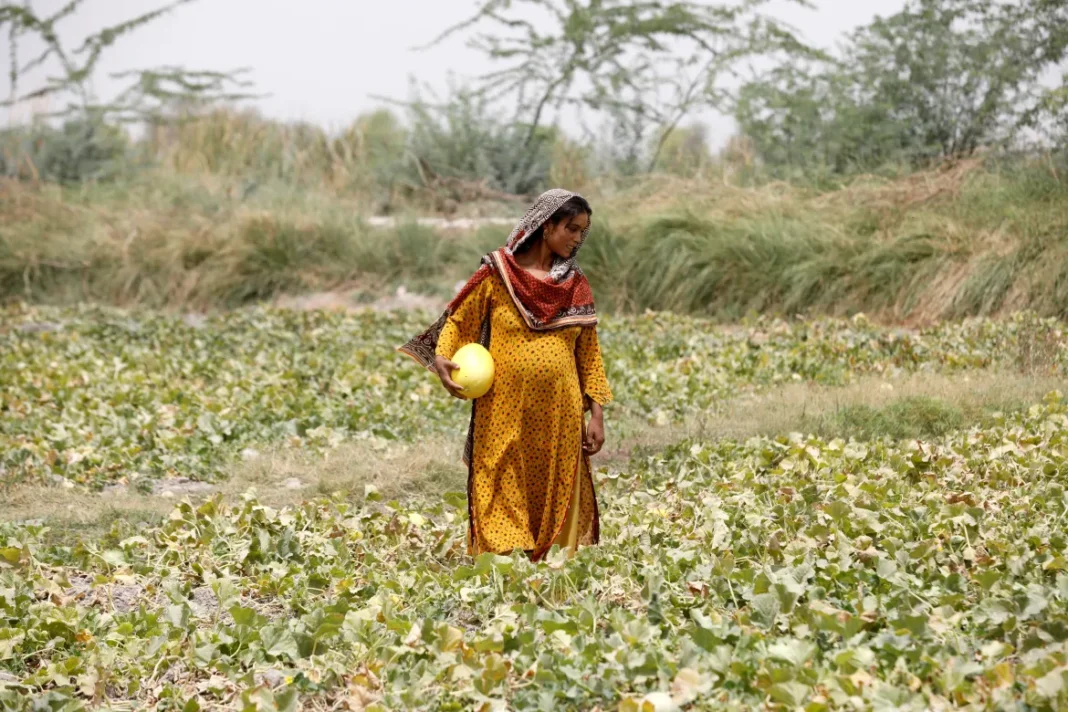It was a freezing January morning in 2025. Gull Bibi woke up at 6 a.m. and hurried to the kitchen. The temperature in her city of Quetta was around minus 6 degrees Celsius when she turned on the gas stove. Due to severe gas load-shedding, she needed to prepare breakfast and lunch for her family in just two hours.
Gull Bibi, 26, has two children and is expecting her third child in March. She lives with her husband and in-laws in Nawa Killi, located 9.5 km away from Quetta Cantt. The city has been experiencing a gas shortage and power outages for the past few years, which have worsened during winter. In extremely chilling weather, residents face challenges preparing food and warming their rooms.
After putting the kettle on the stove, she rushed to the washroom to perform Wudu for her morning prayer. The water was freezing, and she nearly shivered. Meanwhile, her mother and father-in-law had also woken up and needed hot tea. While serving them, she prepared a meal for her younger son, Subhan, and began making spices for lunch.
For the past year and a half, she had been following her usual morning routine due to an ongoing gas shortage. However, managing this routine became increasingly difficult due to her seven-month pregnancy and the extremely dry winter.
Many areas of Balochistan experienced their first winter shower in mid-November, with temperatures dropping to minus 14 degrees during snowfall. However, for the past two years, these regions have been facing unusual rainfall patterns, resulting in less precipitation from November to March. The dry winters are causing significant healthcare issues for the population, particularly posing severe risks to pregnant women and newborns.
The changes in weather patterns are not confined to Balochistan; they are also evident in Punjab, Sind, and Khyber Pakhtunkhwa (KPK). Many areas in Punjab and interior Sind are currently experiencing dense fog and smog, while temperatures have dropped unusually low in regions that typically maintain stable and pleasant winter weather.
According to a recent ranking of the World Climate Index, Pakistan ranks eighth among the countries most vulnerable to climate change worldwide. The index indicates that severe and adverse weather conditions in these countries are not only causing a downfall in their economies but also severely impacting people’s livelihoods and health.

Pregnant women living in rural areas are particularly at risk. After the historic and devastating floods in Pakistan in August 2022, nearly 600,000 pregnant women in IDP camps required urgent medical services. Furthermore, in 2023, record-breaking heatwaves in Sind and Balochistan accelerated maternal and child mortality rates.
Pakistan has one of the highest neonatal mortality rates in the world. A global study conducted in 2019, published in the Lancet, found that 33 percent of stillbirths occur in South Asia. In Pakistan, the rate of stillbirths was 30.6 per thousand live births in 2019. While this marked a significant improvement from 39.9 in 2000, it remains well above the regional average of 18.2 and the global average of 13.9.
Pregnant women and threats from the heat
“Temperatures in many rural areas of Sindh, including Badin, can reach up to 52 degrees Celsius or above between June and August. In these areas, pregnant women often have to fetch water from miles away. Additionally, many women work in brick kilns or help their male counterparts in the fields during harvest season,” says Amina Khaskheli.
Khaskheli is a 45-year-old polio vaccination worker who currently leads the vaccination program in Jani Khaskheli, a small town in the Matli district of Badin, Sind. Over 20 years, she has traveled to remote areas to administer polio vaccinations and has observed the hardships that pregnant women face in extreme heat.
She reports that in the past two years, there has been a rise in the number of premature and low-weight infants being born. Furthermore, the rates of miscarriages, as well as maternal and child mortality are also increasing.

Louisa Samuels is a researcher at the Department of Gynaecology at St Thomas’ NHS Trust in London. She was the lead author of a 2022 study that examined the effects of rising temperatures on pregnant women in London. According to her research, there is mounting epidemiological evidence that high ambient temperatures are associated with pregnancy complications and adverse fetal and neonatal complications and outcomes including preterm birth, stillbirth, and low birth weight.
“Extreme heat increases the risk of premature birth and miscarriage, particularly for women living in rural areas of hotter regions around the world. Many of these women lack adequate cooling systems in their homes, which exacerbates the challenges they face during heat waves.”
She explains that core body temperature in adults is maintained through the heat generated within the body and its release, which is directly influenced by the external environmental temperature. The effects of heat are related to the temperature to which our body is accustomed and how much heat it can tolerate.
“Pregnancy induces numerous physiological changes in women in addition to changes in body mass. Cardiovascular changes occur gradually throughout pregnancy so that by the third trimester, plasma volume and cardiac output increase by almost 50 percent,” Louisa further explains.
“When the ambient temperature rises excessively, thermoregulation becomes more difficult. As a result, strategies such as reducing sweat production, increasing blood flow to the skin, and maintaining a cooler external environment are employed to help normalize the body temperature of pregnant women.”
“In recent years, extreme heat waves have resulted in a 15 percent increase in miscarriages and premature births worldwide. For this reason, the World Health Organization has issued a warning about the serious risks that rising temperatures pose to pregnant women,” she briefs.
Research is being conducted worldwide on the effects of extreme heat on pregnant women. In January 2024, Aga Khan University in Karachi, Pakistan, launched a four-year research project, supported by the UK’s Wellcome Trust. This is the first study of its kind in Pakistan focusing on pregnant women.
Assistant Professor J. Das from the Department of Pediatrics and Child Health at Aga Khan University is leading the project. He informs that in the initial phase, data will be collected from 6,000 pregnant women living in the districts of Tando Muhammad Khan, Mithiari, and Tharparkar in Sindh province.
Following this, data collection will extend to slums and low-income areas of Karachi, including Korangi, Dhobi Ghaat, and Kharadar. In these areas, pregnant women often reside in small apartments and work in kitchens during hot weather without adequate means to cool their living spaces or ensure fresh air circulation.
According to Dr. Das, this research project will involve giving pregnant women special devices to wear, which will collect data on changes and increases in their body temperature. This information will help in understanding the factors that negatively affect the health of both the pregnant woman and her child.
Dr. Ayesha Yousafzai from the Department of Pediatrics and Child Health at Aga Khan University emphasizes that this four-year project is crucial. In extremely hot regions, it is essential to provide lady health visitors and gynecologists with adequate training and guidelines to protect pregnant women from adverse heat effects. This research project aims to provide vital information for that purpose.
In 2017, the Sri Ramachandra Institute for Higher Education and Research in India conducted a study, the results of which were recently published. An analysis of data from 800 women in the Indian state of Tamil Nadu found that extreme heat waves doubled the risk of stillbirth and premature birth.
A similar study by Harvard University, published in January 2023, analyzed data from 9,500 pregnant women in Massachusetts. This study revealed that extreme heat affects fetal growth, impacting the size of the baby’s head, abdomen, and thigh bone length.
Scientists at the Harvard Chan School of Public Health have found that increased heat exposure during pregnancy was associated with smaller fetal growth measures (ultrasound parameters and birthweight), with associations strongest for head parameters (head circumference) in early to mid-pregnancy, and abdominal circumference later in pregnancy and birth weight.
The researchers revealed that higher temperatures are associated with impaired fetal growth—which has major health implications including a sharp increase in autism cases in newborns around the world.
These findings contribute to the growing body of evidence documenting the overall health impact of rising temperatures, and highlighting the need for urgent and transformational action to combat the climate crisis.
References:
- https://hsph.harvard.edu/news/the-dangers-of-heat-during-pregnancy/
- https://academic.oup.com/ije/article/52/3/749/6887251?login=false
- https://www.undp.org/pakistan/environment-and-climate-change
- https://obgyn.onlinelibrary.wiley.com/doi/10.1111/1471-
- https://www.thelancet.com/journals/lancet/article/PIIS0140-6736(21)01112-0/fulltext#seccestitle140
- https://link.springer.com/article/10.1007/s00484-022-02301-6
- https://www.aku.edu/news/Pages/News_Details.aspx?nid=NEWS-
- https://pmc.ncbi.nlm.nih.gov/articles/PMC10298495/
More from the Author: Breaking the Odds in Field Epidemiology in Pakistan

Saadeqa Khan is the founder, CEO, & Editor-in-Chief of Scientia Pakistan. She’s a member of the Oxford Climate Journalism Network (Second Cohort) and NASW. Saadeqa is a fellow of NPF Washington, The Falling Walls Foundation, and the Science Journalism Forum. Saadeqa has won several international journalism grants and awards for her reports.

